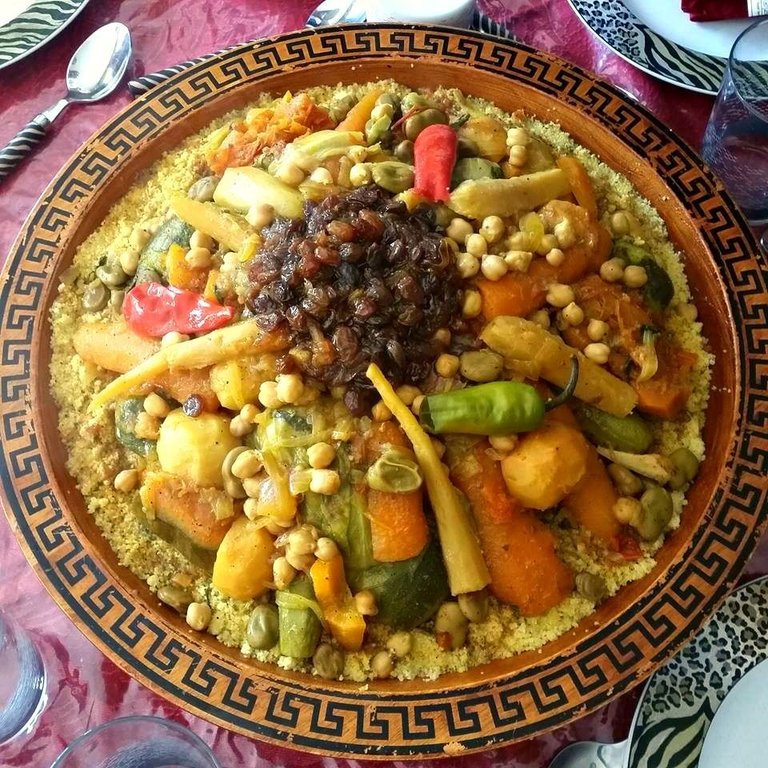
Moroccan food is incredibly diverse, thanks to the country’s interaction with other cultures and nations over the centuries, including Berber, Moorish, Arab and Mediterranean influences.
Spices feature extensively in Moroccan cooking and there is a centuries-old art to their careful balancing. Many ingredients, such as saffron, mint, olives oranges and lemons, are frequently homegrown. Common spices include karfa (cinnamon), skinjbir (ginger), tahmira (paprika), gesbour (coriander) and zaafran beldi (saffron). Other popular spice additions include harissa – a paste made of garlic, chillies, olive oil and salt that adds a fiery kick to many dishes, and ras el hanout – a dried spice mix that combines anywhere from a dozen to 100 spices, with every home cook and vendor having their own secret recipe.
A classic Moroccan dish is the tagine (or tajine) – a slow-cooked stew made in an earthenware dish known by the same name. They are typically made with inexpensive cuts of meat that become tender with long cooking and are typically flavoured with fruits, olives, preserved lemons, and spices.
Couscous is considered a gift from Allah and is a staple of North African countries. It is the most common starch used to accompany dishes and is typically cooked with spices, vegetables, nuts and dried fruit. When prepared traditionally, fine semolina is rubbed with super fine semolina to coat until it resembles a grain. When steamed, it becomes light and fluffy.
The essence of Moroccan food is a communal style of eating, with many dishes shared by the family. Mealtimes are very social and eaten at a leisurely pace with much laughter and talking.
Hospitality is a very important part of Moroccan culture and making guests welcome is also part of the Islamic teaching. Upon entering a Moroccan home, guests are typically offered food and tea within seconds.
Tea is an important part of socialising and making the popular green tea with mint is considered something of an art form, with the pouring of tea being considered as important as the tea itself.
Fresh fruit is the traditional way to end a meal but Moroccan sweets are delicious and pastries and cookies are frequently enjoyed with afternoon coffee or tea. Among them are dense, rich pastries perfumed with nuts, fruits and spices.
@network2017 thank you for sharing ,i invite you to my page to voteup my first steemit blog,just sign up today
thank you
done
Hi! I am a robot. I just upvoted you! I found similar content that readers might be interested in:
https://www.sbs.com.au/food/article/2008/07/01/about-moroccan-food